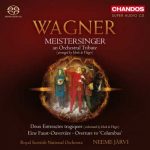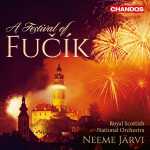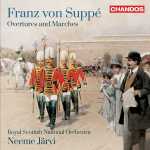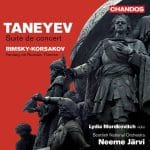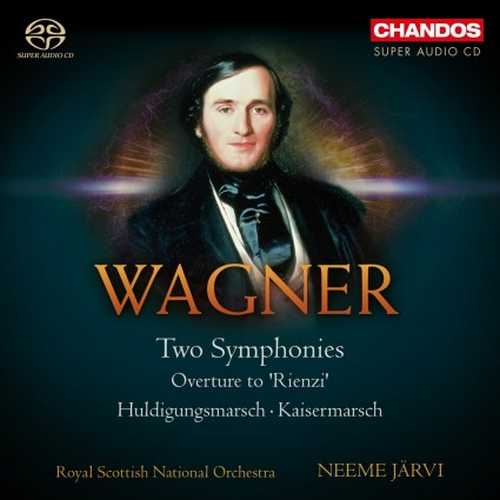
Composer: Richard Wagner
Orchestra: Royal Scottish National Orchestra
Conductor: Neeme Järvi
Audio CD
Number of Discs: 1
Format: FLAC (tracks)
Label: Chandos
Size: 1.34 GB
Recovery: +3%
Scan: yes
Symphony in C major, WWV 29
01. I. Sostenuto e maestoso
02. II. Andante ma non troppo
03. III. Allegro assai
04. VI. Allegro molto e vivace
Symphony in E Major, WWV 35 (arr. F. Mottl)
05. I. Allegro con spirito
06. II. Adagio cantabile
Huldigungsmarsch in E flat major, WWV 97 (arr. J. Raff)
07. Huldigungsmarsch
Overture to ‘Rienzi, der Letzte der Tribunen’, WWV 49
08. Overture
Kaisermarsch (Imperial March), WWV 104
09. Kaisermarsch
Early on in his career, Wagner composed two symphonies, both of which are included on this disc. The Symphony in C, which he wrote when he was just nineteen years old, is heavily influenced by Beethoven in its character, mood, and instrumentation. Written two years later, in 1834, the Symphony in E was left unfinished, Wagner completing only the first movement and thirty bars of the second. The completed version recorded here was prepared by the conductor Felix Mottl more than fifty years later at the request of Wagner’s widow, Cosima.
The two marches on this disc are the composer’s most obvious contributions to the genre of pomp and circumstance. The Huldigungsmarsch was written in 1864 for King Ludwig II of Bavaria. The march-like rhythms and brassy colours complement sections in which the strings provide a continuously flowing movement, all leading to a jubilant conclusion. The Kaisermarsch (1871) was a commission from the publishing firm Peters, who requested from Wagner a heroic morale booster at a time when the German countries were at war with France. Having initially composed it for military band, Wagner soon rewrote it for symphony orchestra, the version recorded on this disc.
The Overture to Rienzi, Wagner’s third completed opera (1838 – 40), incorporates the melody of Rienzi’s prayer at the start of Act V, which became the opera’s best-known aria, and ends with a dazzling military march. The Prelude to Act III of Lohengrin (1845 – 47) has the energy, fervour, and brassy sounds of the Overture to Der fliegende Holländer, and displays Wagner’s lasting fascination with creating drama by symphonic means.
